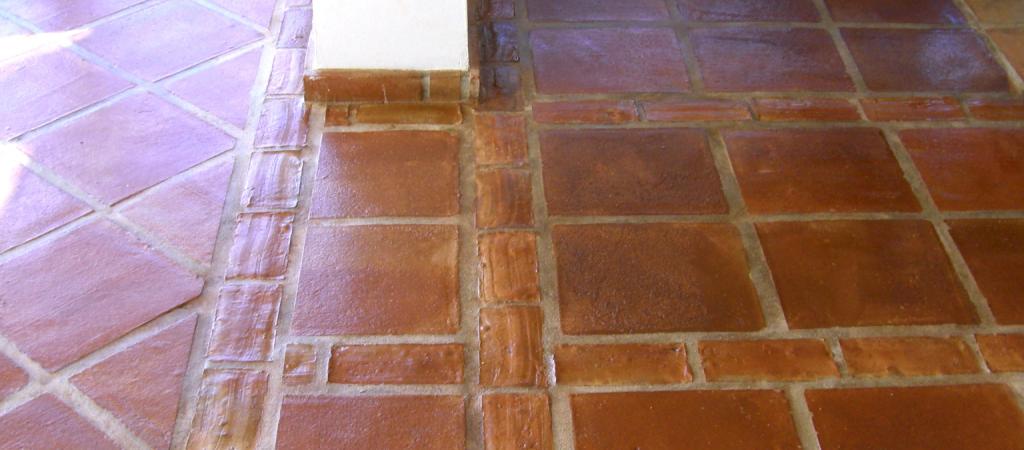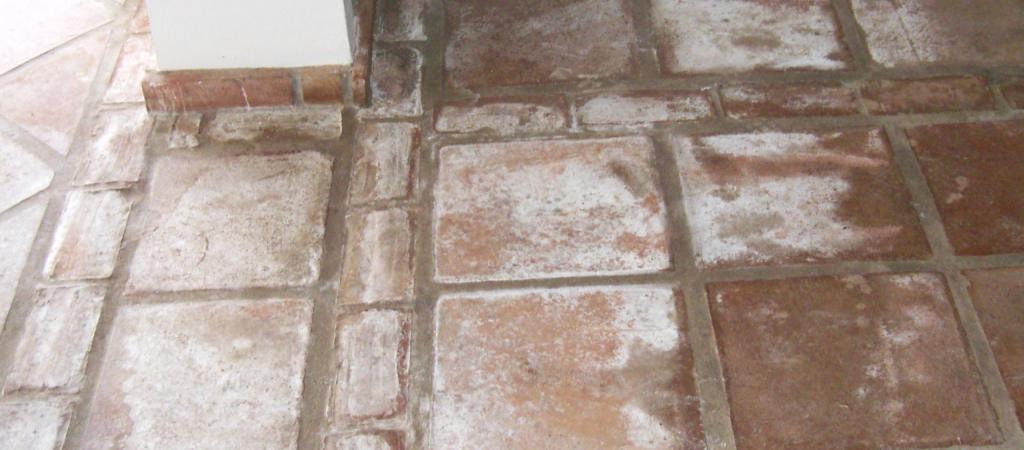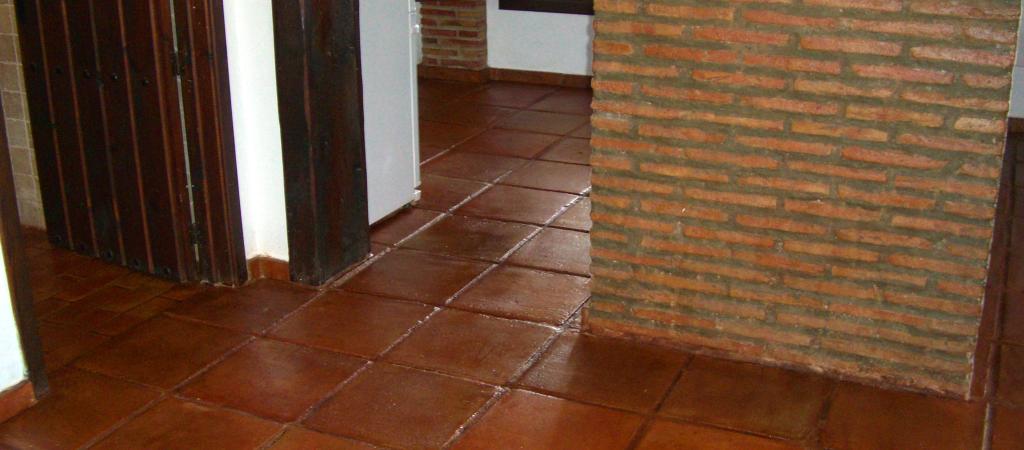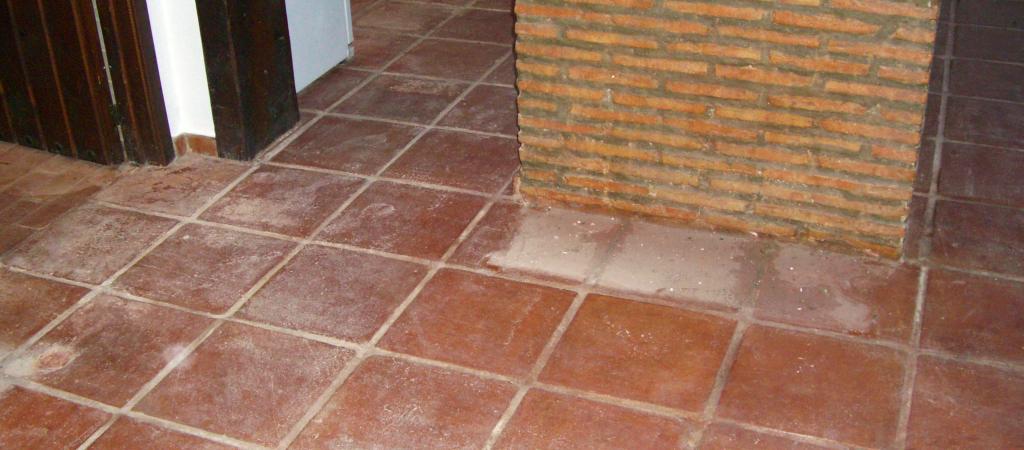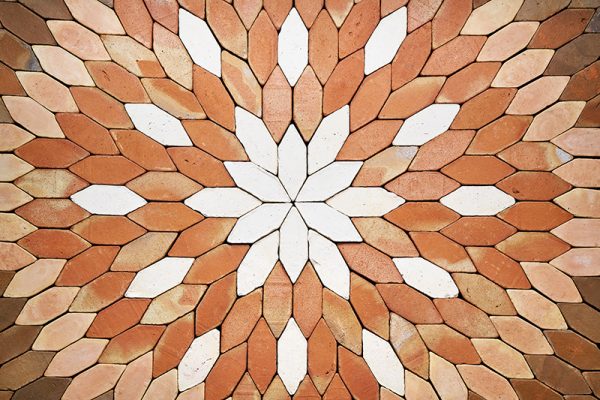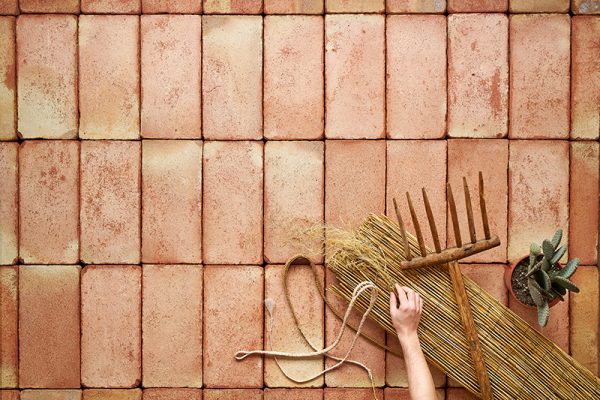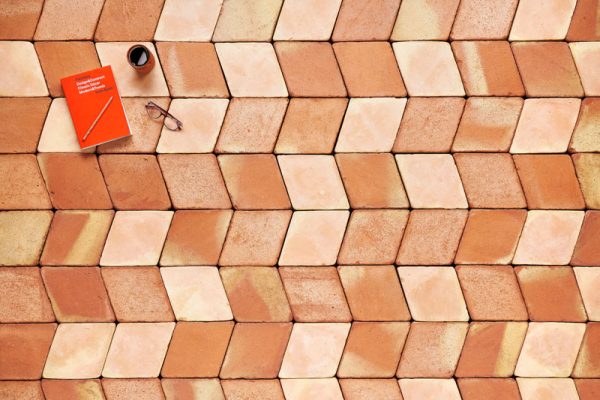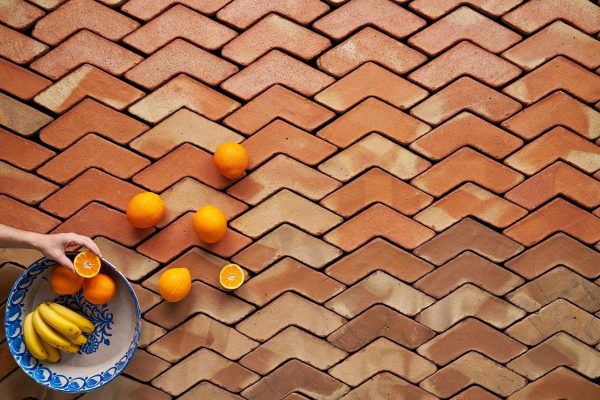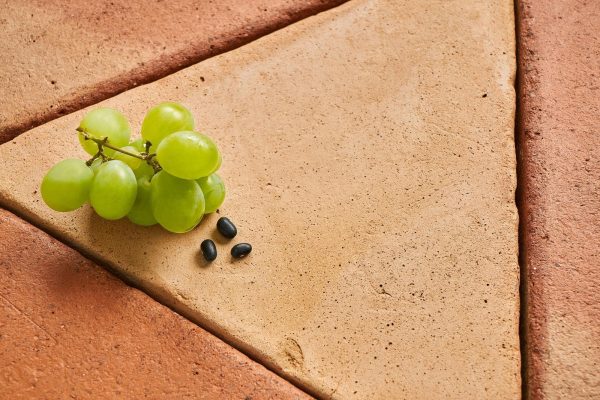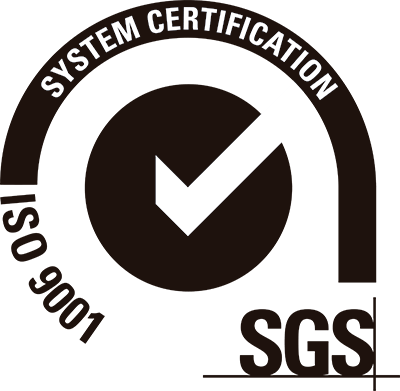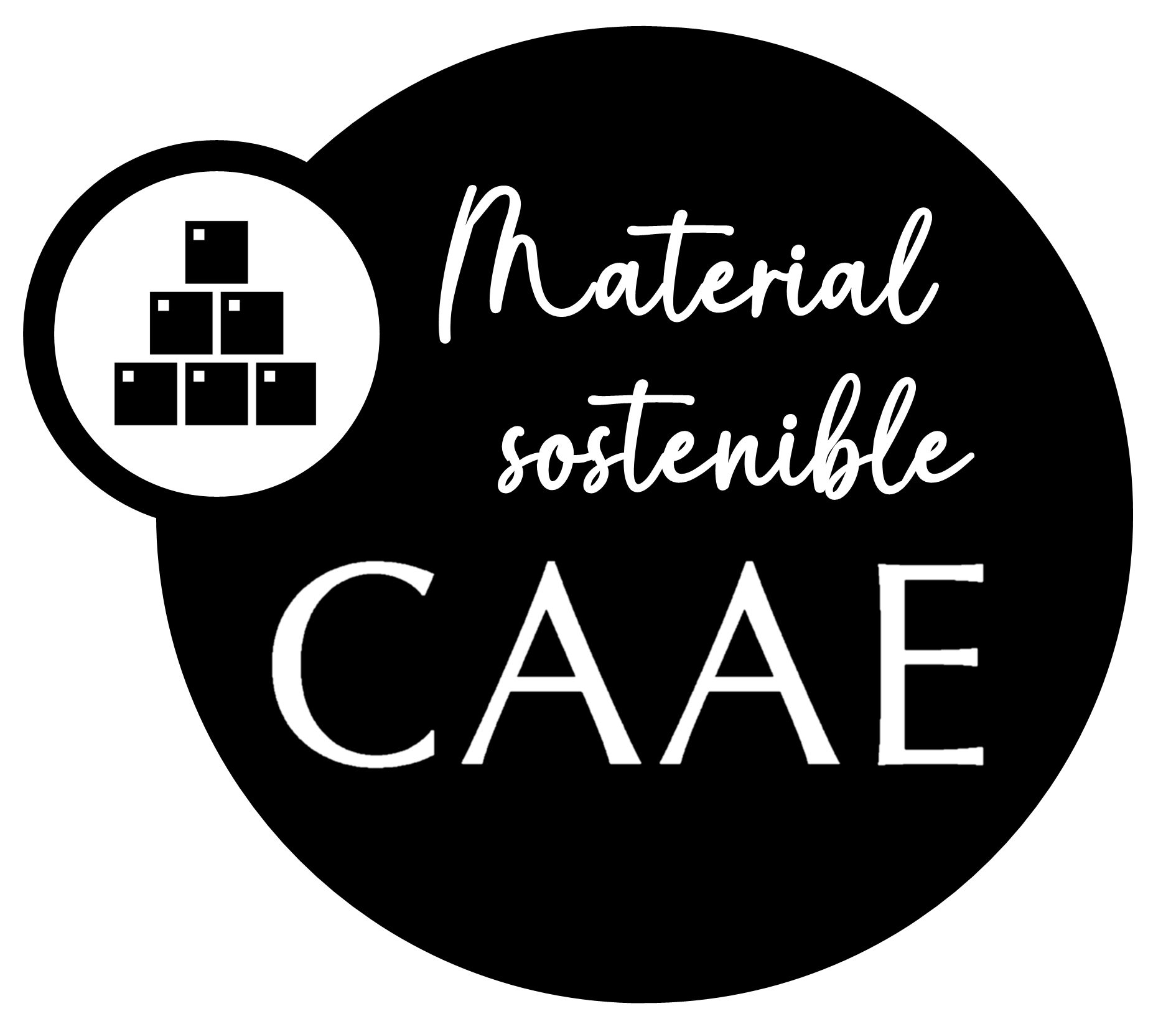
How to get salt stains off of tile floors
Below we take a look at all there is to know about how to prevent, repair and protect your terracotta floors from saltpeter and salt efflorescence.
On this article, we tell you all there is to know about how to get salt stains off of tile floors. Keep reading to learn about causes, prevention and treatments on this common nuissance that terracotta floor owners often experience.
Conditions and causes for the presence of saltpeter on terracotta floors
- The presence of aqueous salts in one of the elements which makes up the floor. It is primarily porous materials which are susceptible to containing soluble salts: masonry work, stone materials, ceramics, etc.
- Moisture. The most common type is seepage, however saltpeter can be formed by all five types of moisture: seepage, capillary, accidental, interstitial condensation or structural.
- Transportation of salts through the pavement until recrystallization occurs. This recrystallization can occur on the surface or inside the material. It will depend on the nature of the salts, the porosity of the materials and the evaporation conditions. In cases where recrystallization occurs in a hollow inside the materials, this is a phenomenon known as cryptofloresence.
Types of salt efflorescence
Efflorescence is the property that some minerals possess (salts, in this case) whereby they lose the water that they contain through exposure to the air and turn into a solid material on the surface of terracotta floors.
What is inconvenient about efflorescence is that you never known when, where or how it is going to appear, although it does tend to show up in certain parts of a building, such as on porous pavements and facades.
There are a number of efflorescent salts which act inside of the construction. There are also certain types which are more frequently found on the outside of an edifice:
- Calcium sulfate (cements and stonework). This appears due to the existence of other salts and during periods of extended damp periods.
- Potassium sulfate (clays, concretes and mortars with sea water). Causes a crystalline layer and erodes the material.
- Magnesium sulfate or Epsom salt (sedimentary stones, gypsum). Produces a small erosion upon crystallization. Shows up in the form of white-colored stains and cannot be painted over.
- Calcium carbonate (limestone materials). Produces a white outer layer which is very bright in color.
The presence of salts and chemical reactions
Efflorescence which appears on terracotta floors before they are laid is normally caused by:
- The presence of soluble salts in the type of clay used.
- A chemical reaction with the gases which surrounded the pieces during the drying and firing process and interaction between the various components of the raw materials which make up the clay.
Once laid on a new pavement, terracotta floors have a tendency to expel the salts which are located inside. This process is inevitable due to the moisture of the pieces and of the mortar. The degree of intensity will fundamentally depend on the composition of the tile and the moisture factor.
The occurrence of moisture which causes recrystallization to occur on the surface after the tiles have dried is principally a result of water seepage in the ground or in the concrete of the foundation.
This moisture causes saltpeter to appear on terracotta floors, made up of salts which are present in the tiles, in the aggregates and in the cement used as bonding material.
In order to definitively eradicate this type of problem, it is fundamental to firstly identify the origin of the moisture which has caused salt crystallization on the surface and to consider the ambient conditions of the site.
Saltpeter on terracotta floors: prevention, repair and protection
Saltpeter on terracotta floors can be eliminated either by addressing the cause which has given rise to its appearance in the first instance and/or by taking action on the effects that have been brought about.
Addressing the causes
This means taking action against the direct cause which is responsible for the appearance of saltpeter. Which is to say, the moisture. Tackling indirect causes (such as the presence of soluble salts inside the materials) is almost impossible, however.
Nevertheless, some floor producers offer tiles which come with a pre-treatment designed to minimize the salt content inherent to the composition of terracotta tiles.
Addressing the effect
Once the water leakage has been interrupted, you can then proceed to eliminate the efflorescence that has formed. There are different possible cleaning systems:
- Natural cleaning. The crystals are dissolved in a high-pressure water spray and then cleaned away with a bristle brush. The effectiveness of this method will depend on the stiffness of the brush and the absorption coefficient of the material. Artificial drying is normally used if the quantity of water employed is high.
- Chemical cleaning. If the salt does not easily dissolve in water, then it may be necessary to use another product in order to dissolve it. One of the most commonly used liquids for this purpose is vinegar (traditionally) and hydrochloric acid (more common nowadays). This method is similar to natural cleaning in that it is also performed by applying a product under high pressure.
- Mechanical cleaning. This approach is used in cases where the salts recrystallize, forming hard surfaces which are difficult to dissolve. The type of cleaning to be carried out will depend on the hardness of the coating: you can use a metallic wire brush, brush hammer and electric brusher or simply pressure jets.
These cleaning procedures can alter structural elements to some degree because of the characteristics of the material, so it is necessary to protect them in order to avoid any efflorescence forming in the future.
The most common way of doing this is to perform surface stabilization treatments which will prevent moisture and help to waterproof the terracotta tiles.
Prevention for salt stains on tile floors
Preventive measures are actions that we take during the project execution and treatment phases in order to protect the materials. The main objectives are:
- Avoid moisture and dampness.
- Minimization of soluble salts. It will be necessary to comply with the Product Specification Sheet provided together with materials delivered to the site (which should be minimally efflorescent) and to carry out the corresponding efflorescence tests on the elements in-situ. These checks will need to be performed both on all materials regardless as to whether their face will be exposed or not.
- During construction, it is necessary to prevent the terracotta floors from becoming overly wet. This means covering them in the case of heavy rains. Before delivering to the site, the manufacturer will need to keep this particular point in mind.
- Prevent the terracotta tiles from being contaminated by the absorption of soluble salts from external sources (do not stack them on furnace slag, on saline floors, on top of industrial products, rubble, etc.).
- Do not let the terracotta floors get wet on surfaces which are not exposed to rapid evaporation. The appearance of efflorescence in areas which are unexposed indicates the existence of abnormal water leakage.
Repair procedure to get salt stains off of tile floors
Once the floor has been swept and left to dry completely, we use rotary machines in order to distribute and apply the optimal combination of products needed by the terracotta floor. At the same time, we use wet vacuums in order to make sure that the floor does not absorb the dirt and grime brought up.
The use of this equipment is fundamental in order to ensure effective cleaning on surfaces greater than 15 m2. Clients will be able to carry out cleaning themselves on surfaces which are smaller than these dimensions simply by following the instructions for the products in question and by using a hand brush and mop instead of mechanical equipment (although this is labor-intensive and ineffective in comparison).
Once the terracotta floor has been cleaned, we must then wait until it is completely dry before applying a protective treatment. The amount of drying time needed will depend on the season, but a general rule of thumb is between five and ten days.
Walking on the floor is not recommended during this time, but if you absolutely need to do so, then be sure to wear thick socks and no shoes to avoid leaving marks.
How to get salt stains off of tile floors: anti-salt products
The anti-saltpeter products used on terracotta floors are concentrated cleaners based on surfactant compounds, corrosion protectors. They are diluted in water and injected using rotary machines and then rapidly removed with a wet vacuum.
The characteristics of these products are as follows:
- They do not emit vapors and so do not affect fixtures which are sensitive to acidic vapors such as faucets and handles.
- They do not deteriorate the pavement or joints but rather exert an aggressive effect only on debris from installation (mortar and cement on recently laid floors) and on salt efflorescence (especially in outdoor areas).
- They rapidly eliminate rust stains.
- Recommended for use within a temperature range of between 5 ºC and 35 ºC.
- They are fast-acting and can take between 5 and 30 seconds to exert their effect.
- It will be necessary to wear protective goggles and acid-resistant clothing in order to protect against splashes and injuries.
- Be sure to take care around materials which are sensitive to acids, such as polished marble. Hydraulic mosaics and cement products may be affected, depending on the proportion of the product diluted in water, and so supervision by professional workers will therefore be required for this aspect of the procedure.
